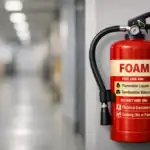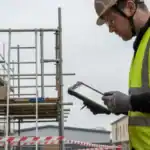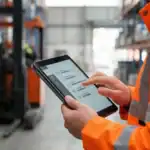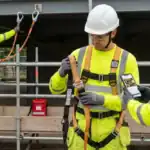
The health and safety responsibilities of sub-contractors aren’t always clear. And if no one’s sure who the duty holders are or what they’re obligated to do, accidents are likely to happen.
Our guide covers what employers and main contractors must do to keep sub-contractors safe while working on their behalf. It also clarifies what duties sub-contractors have in ensuring their work is safe and compliant.
What is a Sub-Contractor?
A sub-contractor is an individual or company that temporarily works on behalf of a main contractor. The main contractor is hired by an employer (also referred to as the client) to complete a defined project. During that project, the main contractor may bring in a sub-contractor to take on specific tasks.
Sub-contractors are typically hired because they have niche knowledge or expertise and can handle one work area better than the main contractor. They’re mostly associated with the construction industry, where projects often need multiple specialists (carpenters, electricians and plumbers, for example) working together. However, sub-contractors exist in all sectors and can be called into any work environment.
Are Sub-Contractors Responsible for Their Own Health and Safety?
Sub-contractors are responsible for their own health and safety and that of anyone else who might be harmed by their work.
But they’re responsible for workplace safety in the same way we’re responsible for our physical health. We all broadly know how to look after ourselves. But we also need advice or support from medical professionals on certain issues.
It’s the same for sub-contractors. They typically have the experience and knowledge to work without incident and are responsible for making the final decisions on health and safety issues related to their work. But they can only consistently make the right choices with support and cooperation from main contractors and employers.
General Health and Safety Responsibilities of Sub-Contractors
Health and safety law is based on the Health and Safety at Work etc. Act 1974 (the HSWA). Under the HSWA, all employers and self-employed individuals have general health and safety responsibilities. This obligation extends to sub-contractors.
Sub-contractors also have duties under the Management of Health and Safety at Work Regulations 1999 (the Regulations), another critical instrument in UK health and safety.
Health and Safety Courses
Our health and safety courses support legal compliance and effective risk management. They raise awareness of common workplace hazards and teach the fundamentals of safe working.
The Health and Safety at Work etc. Act 1974
The HSWA places a duty on all employers, contractors and sub-contractors to take reasonable steps to protect themselves and anyone else from harm caused by work activities.
How each party fulfils this duty depends on the nature of the work they undertake. Generally, more complex projects or tasks are higher-risk. When risks are higher, every party needs to put in more effort to make work safe and comply with the HSWA.
Management of Health and Safety at Work Regulations 1999
The HSWA is an Act of Parliament, which makes it health and safety law. The Regulations set out the first things you need to do to comply with the HSWA. So, even if a breach of Regulations isn’t equal to breaking the law, non-compliance could land you in criminal court.
Under the Regulations, employers, main contractors and sub-contractors must:
- Carry out risk assessments of their work activities
- Implement control measures based on the findings of their risk assessment
- Appoint competent people (i.e., people who can do their jobs safely)
- Give workers necessary information, instruction and training to do their jobs safely
- Cooperate with others to ensure everyone’s safety
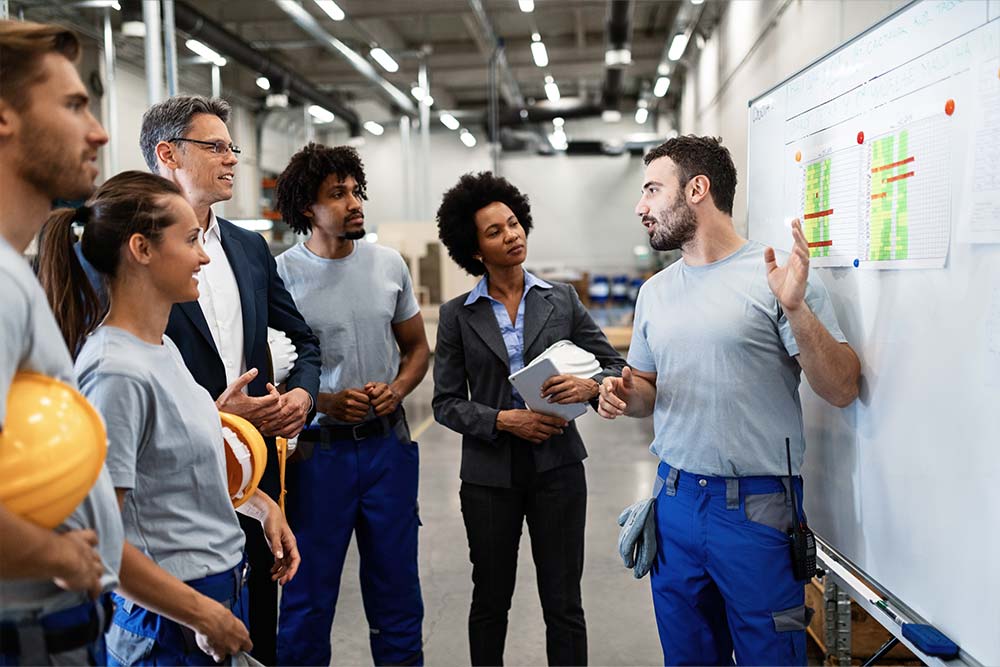
Cooperation should be ongoing. You can’t just have a briefing on day one and leave the sub-contractor to get on with it.
Communication needs to be regular for everyone involved, from the first to the last day of the sub-contractor’s work.
Sub-contractors will inevitably have limited knowledge of a workplace, even if they’re on-site reasonably often. The main contractor and employer need to give them the missing pieces to ensure all work is safe for their teams and anyone else affected by their work.
And sub-contractors have a similar duty to their main contractors. They must inform them of any risks their work activities pose, which should then be communicated to the employer. All parties can then coordinate with each other to ensure no group’s work puts another in danger.
Employers must also communicate emergency procedures to sub-contractors. In a critical situation, sub-contractors need to know first aid arrangements, escape routes and assembly points. Fire wardens also need to know who’s on-site so they can check everyone’s out of the building if there’s an alarm.
Health and Safety Responsibilities of Sub-Contractors in Construction
Sub-contractor safety works slightly differently in the construction industry, as projects often need dozens of professionals to rotate in and out. This turnover is one reason the industry’s accident rates are so high. It’s hard to coordinate multiple contractors and sub-contractors working on-site simultaneously.
So, while the HSWA and the Regulations still apply to construction work, you must also comply with the Construction (Design and Management) Regulations 2015 (CDM).
CDM creates one principal contractor responsible for managing health and safety during a construction project.
Under CDM, the principal contractor must plan work to be safe and eliminate or control all foreseeable risks as early as possible in the project. Before a single brick can be laid, the principal contractor must have extensively planned how risks will be managed and shared this information with all relevant parties.
They must also share project timelines and any other relevant health and safety information with contractors and sub-contractors so they can plan for their work to be safe.
The information sharing starts with a site induction, which covers the risks and controls that contractors and sub-contractors must be aware of. All contractors should continue communicating throughout the project, with the principal contractor taking the lead.
While they have seniority, principal contractors are coordinators. They oversee compliance during the construction work and ensure all parties involved understand and follow relevant safety standards. It’s up to individual sub-contractors to meet the regulations relevant to their work and implement sufficient control measures.
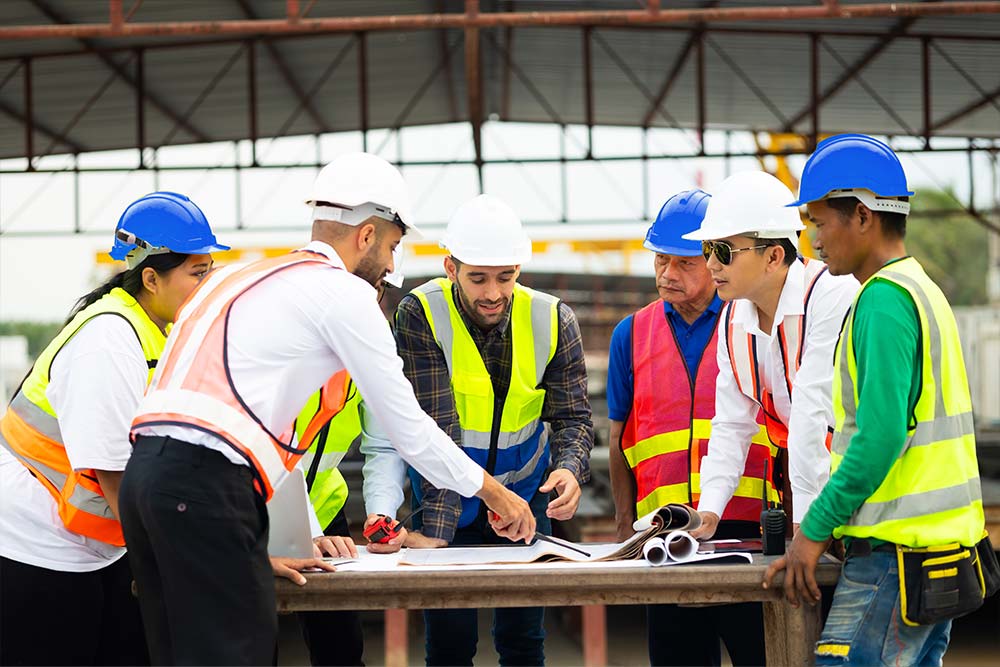
Key Takeaways
- Ongoing communication and cooperation are needed on all sides for sub-contractors to work safely.
- Employers and main contractors have a responsibility to coordinate with sub-contractors to ensure health and safety. Sub-contractors are obligated to do the same.
- Employers and main contractors have a duty to check parties they hire are competent.
- Provided they have all the relevant information, sub-contractors are responsible for their own safety and the safety of anyone else affected by their work.
Health and Safety Training
Many sub-contractors need to be prepared to work safely in any environment, particularly if they work in construction or heavy industry, where risks are consistently high.
Our online Industrial Health and Safety Training course covers the most pressing risks all workers face in industrial settings. It helps prepare anyone to work safely in an industrial workplace, even if they’ve never set foot there before. And, at only 25 minutes and entirely online, it can be easily shared with sub-contractors before they start their work.













